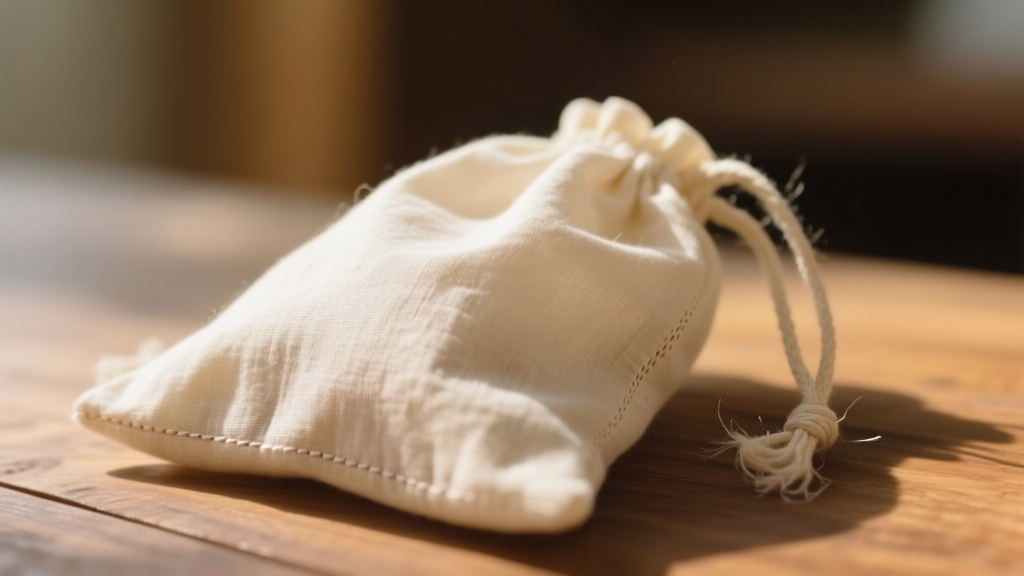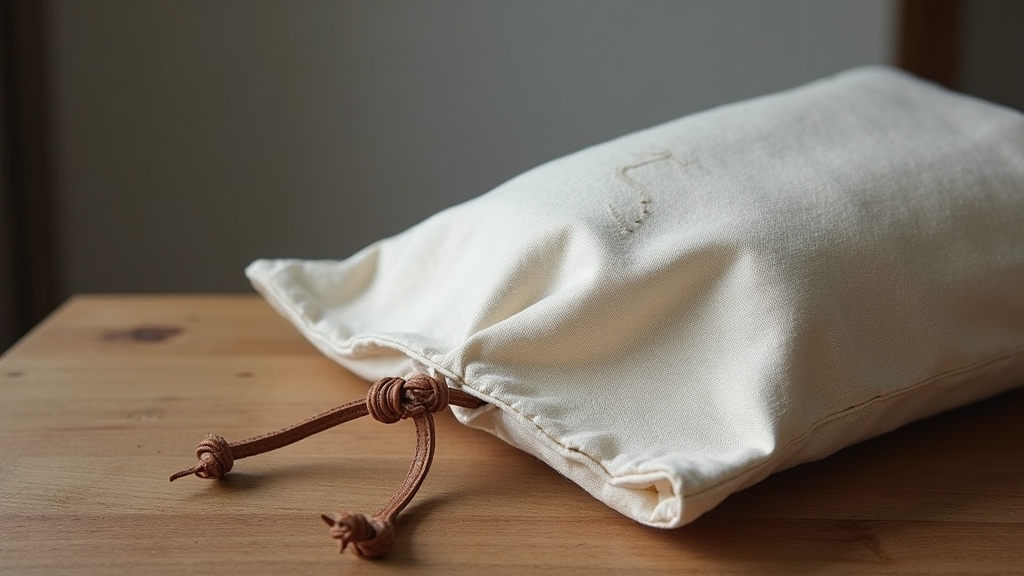
A dust bag is a stylish, fabric pouch that you use to shield your valuables, like handbags and accessories, from dust, dirt, and environmental damage.
Typically made from breathable materials like cotton or durable synthetics, it helps maintain shape, prevent scratches, and reduce moisture buildup that can cause mold.
Besides protecting color and finish, it extends your items’ lifespan. Keep scrolling to discover how these simple bags work magic across various accessories and care tips.
Key Takeaways
- A dust bag is a protective fabric pouch designed to shield items from dust, dirt, and environmental damage.
- Commonly made from materials like cotton, polyester, or nylon, dust bags help prevent scratches and fading.
- They often feature drawstrings or zippers for secure closure and come in various sizes to fit different accessories.
- Dust bags promote air circulation, reducing moisture buildup and the risk of mold or warping.
- Used for storing handbags, shoes, jewelry, and other valuables, they help maintain item condition and extend lifespan.
Definition and Key Functions of Dust Bags

A dust bag serves as an essential protector, shielding your valuable items from dust, dirt, and environmental wear.
These soft, lightweight bags, crafted from fabric or synthetic materials, are designed to safeguard your shoes, handbags, clothing, and even electronics when not in use.
Equipped with drawstrings or zippers, dust bags come in various sizes and shapes to fit your needs.
They prevent scratches, scuffs, fading, and discoloration by blocking dust and light, helping maintain your items’ shape, color, and quality.
Moisture control is another crucial function, as dust bags reduce the risk of mold and warping, especially in humid spaces. Proper care and maintenance can significantly extend the lifespan of your belongings.
Additionally, dust bags aid in organizing multiple stored items, making it easier to keep your belongings neat and accessible storage organization. This is particularly helpful when storing items with durability considerations to prevent premature wear.
Common Materials Used for Dust Bags
Protecting your belongings effectively depends largely on the material chosen for your dust bag.
Polyester, a favorite, combines durability with affordability. It excels in woodworking and cement processing due to its high tensile strength and abrasion resistance. It can operate effectively in temperatures up to 150°C (302°F), making it suitable for many industrial applications with moderate heat exposure.
When selecting fabrics, consider the security level of your storage needs to ensure appropriate protection. If you face harsh chemicals, polypropylene’s hydrophobic nature and acid resistance make it ideal, especially in pharmaceutical and food industries.
For extreme heat, aramid (Nomex) stands strong, resisting temperatures up to 204°C. It’s perfect for power plants and metalworking. Cotton offers breathability and suits ambient air tasks like cleaning rooms. Nylon balances chemical resistance and toughness for various industrial uses.
Specialized materials like PTFE and P84 push boundaries further, providing superior chemical and thermal stability. PTFE, for instance, offers superior chemical resistance and can withstand temperatures up to 260°C (500°F), making it highly durable in aggressive chemical environments.
Picking the right fabric is key to matching your dust bag’s performance to your environment.
Advantages of Using Dust Bags for Handbags
When you store your handbag in a dust bag, you shield it from dust, dirt, and debris that can dull its surface and cause abrasion. This protective barrier prevents staining and preserves your bag’s vibrant finish. Regular maintenance, such as spot cleaning stains, complements dust bag use for optimal protection.
Dust bags also block harmful UV rays, stopping color fading and maintaining that fresh-from-the-designer look.
Beyond aesthetics, they help maintain your handbag’s shape by offering gentle support, especially when paired with internal stuffing. Many luxury brands provide custom dust bags with lint-free interiors to further protect delicate materials.
Made from breathable fabrics like cotton, dust bags promote air circulation to prevent moisture buildup and mold, which can ruin leather.
By minimizing wear and environmental damage, dust bags extend your handbag’s lifespan and preserve its resale value.
Using one isn’t just smart—it’s essential for keeping your luxury handbag beautiful and intact over time.
Dust Bags for Protecting Various Accessories
Though dust bags are often linked to handbags, they’re equally essential for safeguarding a wide range of accessories.
Dust bags aren’t just for handbags—they’re vital for protecting all kinds of accessories.
You’ll find drawstring bags perfect for watches, shoes, and wallets, while flap-style dust bags suit scarves and sunglasses. These bags are designed to maintain original shape during storage and transit.
For delicate items like jewelry or electronics, microfiber bags offer hypoallergenic, soft protection that prevents scratches. Using protective accessories like these is crucial for preventing damage during travel.
If you travel frequently, nylon dust bags provide durable, water-resistant coverage.
Velvet bags add a luxurious touch, ideal for preserving the luster of fine leather goods.
Cotton and eco-friendly materials like organic cotton or bamboo fiber deliver breathable protection, preventing moisture buildup and mold.
Care and Maintenance Tips for Dust Bags
Because dust bags serve as guardians for your valuables and industrial systems alike, maintaining them properly guarantees they perform at their best and last longer.
You should clean fashion dust bags when stained, using mild detergent and lukewarm water. Avoid bleach to protect fabric and logos. Consider the impact of external elements like dirt or moisture, which can affect the overall size and condition of the dust bag.
For industrial filter bags, schedule cleaning every six months or more frequently with heavy use. Use gentle washing or mechanical cleaning like vacuuming to extend lifespan. Proper cleaning frequency helps maintain filter integrity and prevents over-cleaning that can reduce efficiency.
Always inspect bags and housings for damage, replacing any faulty parts promptly to maintain system integrity. Store dust bags in dry, breathable spaces away from sunlight, and handle them with clean hands to avoid stains.
Frequently Asked Questions
Can Dust Bags Prevent Fading From Sunlight Exposure?
Yes, dust bags can definitely prevent fading from sunlight exposure.
When you store your handbag in a breathable dust bag made from natural fabrics like cotton or linen, you block harmful UV rays that cause discoloration and weaken materials.
This breathable shield also avoids moisture buildup, which plastic bags trap.
By using dust bags consistently, you keep your bag’s colors vibrant and protect its surface.
This helps it look fresh and last longer despite light exposure.
Are Dust Bags Reusable for Different Items?
Yes, you can reuse dust bags for different items, but you’ll want to contemplate the material and cleanliness first.
Reusable bags made from durable fabrics like spun bonded polyester handle multiple uses well, but mixing heavy debris with delicate items might reduce their effectiveness.
Make sure to clean the bag thoroughly between uses to avoid cross-contamination and maintain filtration.
With proper care, you’ll enjoy cost savings and eco-friendly cleaning versatility.
How Do Dust Bags Compare to Plastic Covers?
Think of dust bags as breathable guardians, letting your items breathe while gently shielding them from dust.
Compared to plastic covers, which act like airtight bubbles, dust bags prevent moisture buildup thanks to their fabric’s airflow.
You’ll find dust bags more eco-friendly and customizable, perfect for delicate or luxury pieces.
Plastic covers, though, excel in moisture protection and visibility, making them better for electronics or seasonal clothes needing waterproof security.
Can Dust Bags Protect Items During Air Travel?
Dust bags won’t protect your items well during air travel. They’re great for keeping dust off and preserving shape at home, but they don’t shield against bumps, drops, or rough handling on planes.
For trips, you’ll want sturdier options like luggage covers or hard cases that guard against impacts and moisture.
Save your dust bags for closet storage. They’re stylish protectors but not travel warriors.
Do Dust Bags Come in Customizable Sizes and Designs?
Yes, dust bags come in customizable sizes and designs to perfectly fit your items, whether it’s shoes, handbags, or jewelry.
You can choose from materials like cotton, satin, or linen, and personalize colors, patterns, and logos to match your brand’s style.
Plus, you get closure options like drawstrings or grosgrain ribbons.
This flexibility lets you protect your products while elevating your brand’s sophistication and identity effortlessly.
Transform Storage Into a Chic Ritual
You might not think much about a dust bag, but just like a soft whisper guarding your favorite handbag, it shields your treasures from dust and time. As you tuck your accessories inside, imagine a gentle breeze wrapping them in care, keeping colors vibrant and materials flawless.
Using and maintaining dust bags isn’t just smart; it’s stylish protection that preserves your investment. It turns everyday storage into an elegant ritual you’ll appreciate every time.
